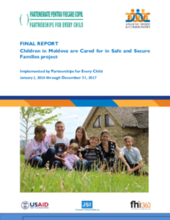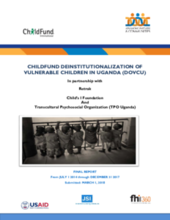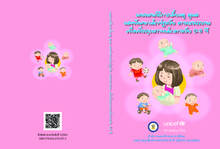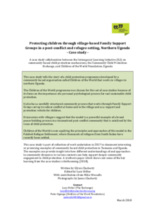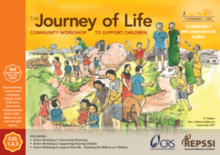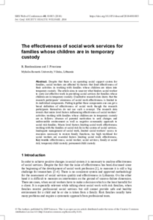Displaying 391 - 400 of 944
The quantitative study presented here contributes knowledge regarding the attitude of professionals towards positive parenting and child participation in professional support of families that are under temporary protection, with the goal of reunification.
This quantitative study contributes knowledge regarding the attitude of professionals towards positive parenting and child participation.
This study utilizes self-report data from one kinship navigator federal demonstration project, which used a randomized control trial, to examine demographic characteristics for grandmothers under and over 55 years of age, whether grandmother caregivers (≥55 years) improve family resilience, social support, and caregiver self-efficacy, and which interventions improved outcomes for grandmothers (≥55 years).
This study aims to give voice to parents and gather their views about contact visits in foster care.
This final report presents key learning, findings, and results of the “Children in Moldova are Cared for in Safe and Secure Families” (Children in Moldova) project.
This final report on the “Deinstitutionalization of Vulnerable Children in Uganda” (DOVCU) project identifies its successes as well as some shortcomings and key learning that is directly relevant to other projects working to support family care for children.
The guidelines provide information for ECD professionals and parents about holistic child development, linked to the national Early Learning and Development Standards.
This case study tells the story of a child protection programme developed by a community-based organisation called Children of the World that works in villages in northern Uganda.
The series is designed for communities wishing to support children in need and their caregivers. It includes a facilitator training guide and community implementation guide, as well as guides on protecting children from trafficking and abuse.
The article aims to uncover what hinders social workers to carry out effective work in providing social services for families whose children are in temporary custody.

